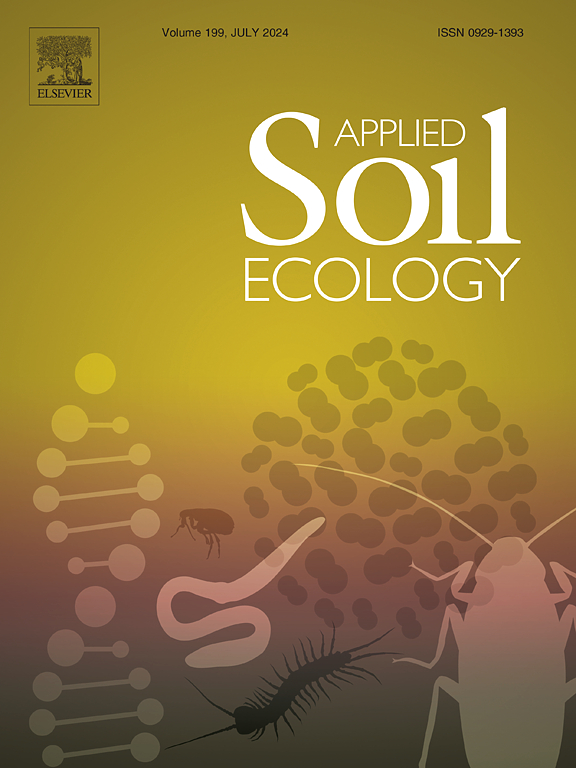Soil depth and fertilizer shape fungal community composition in a long-term fertilizer agricultural field
IF 4.8
2区 农林科学
Q1 SOIL SCIENCE
引用次数: 0
Abstract
Soil fungal communities are vital in agro-ecosystems, driving organic matter decomposition and nutrient cycling, yet their distribution across soil depths remain underexplored. This study utilized high-throughput sequencing of fungal ITS2 amplicons to investigate fungal richness, diversity, community composition, and potential functions along a depth gradient (0–100 cm) under various fertilizer treatments in the field (control, NK, NP, PK, NPK). Results revealed that fungal richness and diversity peaked in topsoil (0–30 cm) and markedly declined in subsoil layers (30–100 cm), with distinct fungal taxa present in each layer. The C to N ratio (C/N) (12.9 %) was the most important predictor for ASV observed richness, while Depth (12.8 %) and C/N (11.1 %) were the top predictors for Shannon diversity. Soil depth explained 17.0 % of the variation in community composition, while fertilizer treatments accounted for 8.4 %. Fertilization significantly altered fungal community composition in subsoil layers but had a minimal impact on topsoil communities, with unique biomarkers associated with each treatment. Soil properties, including total organic carbon, pH, electrical conductivity, C to N ratio, clay content, and bulk density, were significant factors driving fungal composition variation across depths. These findings underscore the importance of considering soil depth in studying the impact of fertilization on soil microbiota, providing valuable insights into the complex dynamics of soil microbial communities in response to long-term chemical fertilizer treatment. In the long term, greater insights into fungal dynamics across soil profiles can inform new strategies to help safeguard sustainability of soil, a critical resource for food security.

求助全文
约1分钟内获得全文
求助全文
来源期刊

Applied Soil Ecology
农林科学-土壤科学
CiteScore
9.70
自引率
4.20%
发文量
363
审稿时长
5.3 months
期刊介绍:
Applied Soil Ecology addresses the role of soil organisms and their interactions in relation to: sustainability and productivity, nutrient cycling and other soil processes, the maintenance of soil functions, the impact of human activities on soil ecosystems and bio(techno)logical control of soil-inhabiting pests, diseases and weeds.
 求助内容:
求助内容: 应助结果提醒方式:
应助结果提醒方式:


